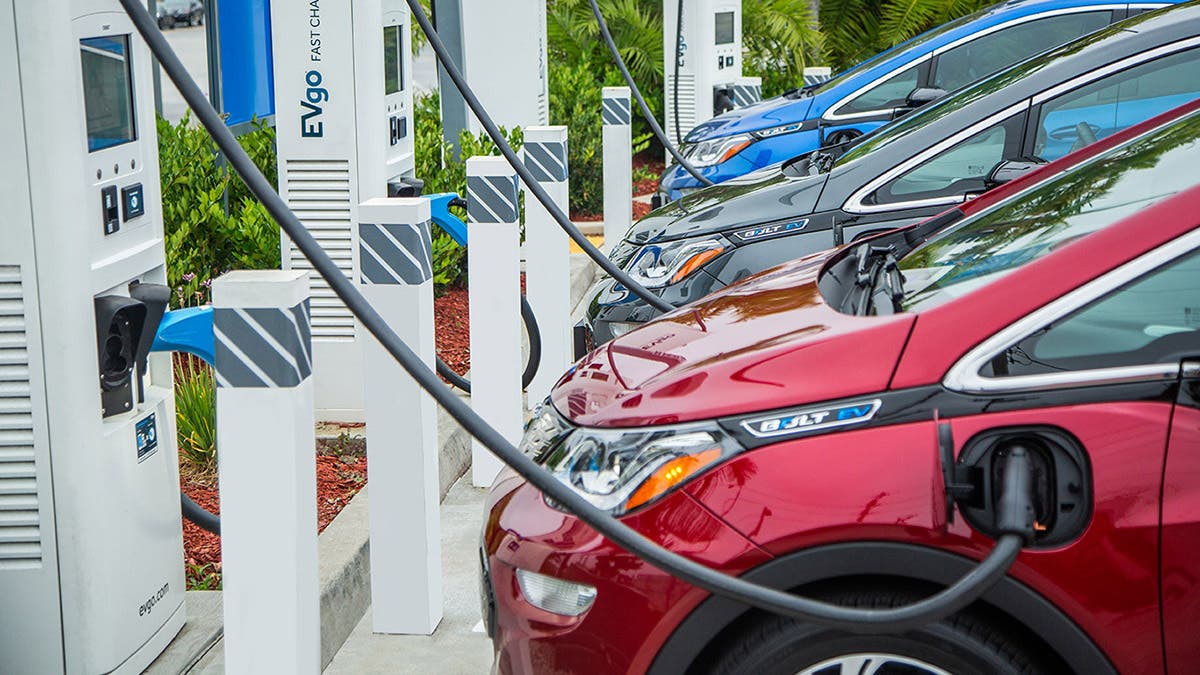Breakthrough discovery could charge your dead phone in 60 seconds and your car in 10 minutes
Imagine if your dead laptop or phone could charge in a minute, or if an electric car could be fully powered in just 10 minutes

Imagine if your dead laptop or phone could charge in a minute, or if an electric car could be fully powered in just 10 minutes. While this might sound like science fiction, new research from a team of scientists at CU Boulder suggests that such advancements could be on the horizon.
Published today in the Proceedings of the National Academy of Sciences, researchers in Ankur Gupta’s lab have made a significant discovery about how tiny charged particles, called ions, move within a complex network of minuscule pores. This breakthrough could pave the way for the development of more efficient energy storage devices, such as supercapacitors, according to Gupta, an assistant professor of chemical and biological engineering.
“Given the critical role of energy in the future of the planet, I felt inspired to apply my chemical engineering knowledge to advancing energy storage devices,” said Gupta. “It felt like the topic was somewhat underexplored and as such, the perfect opportunity.”
Gupta explained that several chemical engineering techniques, commonly used to study flow in porous materials such as oil reservoirs and water filtration systems, have not been fully utilized in some energy storage systems. By applying these techniques to their research, Gupta’s team was able to gain new insights into the behavior of ions in porous materials.
The implications of this discovery are vast. Efficient energy storage is crucial not only for vehicles and electronic devices but also for power grids. Power grids require efficient storage to avoid waste during periods of low demand and to ensure a rapid supply during high demand. This makes the development of advanced energy storage devices a key factor in managing the fluctuating energy demands of modern society.
Supercapacitors, which are energy storage devices that rely on ion accumulation in their pores, have rapid charging times and longer lifespans compared to traditional batteries. “The primary appeal of supercapacitors lies in their speed,” Gupta said. “So how can we make their charging and release of energy faster? By the more efficient movement of ions.”
Related Stories:
Their findings also challenge Kirchhoff’s law, a fundamental principle governing current flow in electrical circuits since 1845. High school students often learn that Kirchhoff’s law explains how electrical current flows through circuits, but Gupta’s research shows that this law doesn’t fully describe ion movements in complex porous networks.
Unlike electrons, which move primarily due to electric fields, ions also move due to diffusion. The researchers found that ion movements at pore intersections are different from what Kirchhoff’s law predicts.
Before this study, ion movements were only described in the literature for straight pores. Gupta’s team has now demonstrated how ions move through a complex network of thousands of interconnected pores. Their findings allow for the simulation and prediction of ion movement in just a few minutes.
“That’s the leap of the work,” Gupta said. “We found the missing link.”
The potential applications of this research are wide-ranging. More efficient supercapacitors could revolutionize energy storage for electronic devices, electric vehicles, and power grids.
Imagine a world where recharging your electronic devices or refueling your electric car takes just a few minutes. This would not only be incredibly convenient but also significantly reduce the environmental impact of energy consumption.
Moreover, the ability to efficiently store energy is essential for the integration of renewable energy sources into the power grid. Renewable energy sources, such as solar and wind power, are inherently intermittent, meaning that their energy output fluctuates based on weather conditions and time of day. Efficient energy storage solutions are needed to capture and store this energy when it is available and release it when it is needed, ensuring a stable and reliable power supply.
Gupta’s research represents a major step forward in the field of energy storage. By understanding how ions move through complex porous networks, scientists can design better supercapacitors that charge faster, last longer, and store more energy. This could lead to a new generation of energy storage devices that are not only more efficient but also more environmentally friendly.
By applying chemical engineering techniques to the study of energy storage, Gupta and his team have uncovered new insights that could lead to significant advancements in the field. As Gupta said, “Given the critical role of energy in the future of the planet, I felt inspired to apply my chemical engineering knowledge to advancing energy storage devices.” Their discovery of how ions move through porous networks represents a major leap forward, with the potential to transform the way we store and use energy.
For more science news stories check out our New Innovations section at The Brighter Side of News.
Note: Materials provided above by The Brighter Side of News. Content may be edited for style and length.
Like these kind of feel good stories? Get the Brighter Side of News' newsletter.
Joshua Shavit
Science & Technology Writer | AI and Robotics Reporter
Joshua Shavit is a Los Angeles-based science and technology writer with a passion for exploring the breakthroughs shaping the future. As a contributor to The Brighter Side of News, he focuses on positive and transformative advancements in AI, technology, physics, engineering, robotics and space science. Joshua is currently working towards a Bachelor of Science in Business Administration at the University of California, Berkeley. He combines his academic background with a talent for storytelling, making complex scientific discoveries engaging and accessible. His work highlights the innovators behind the ideas, bringing readers closer to the people driving progress.



